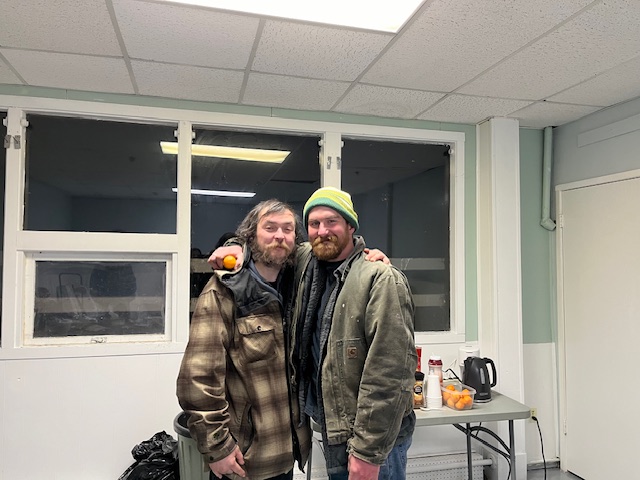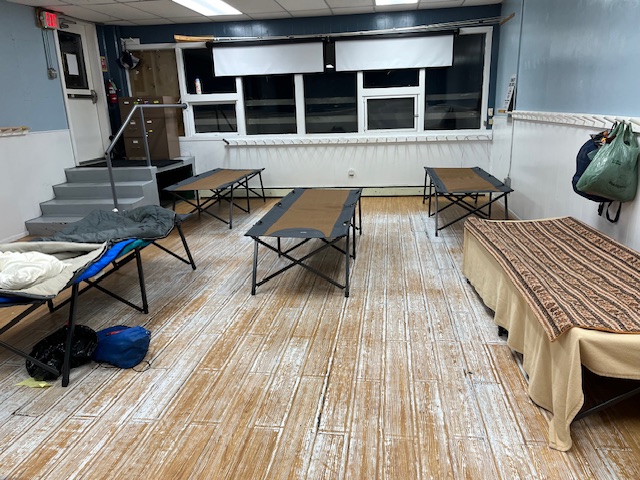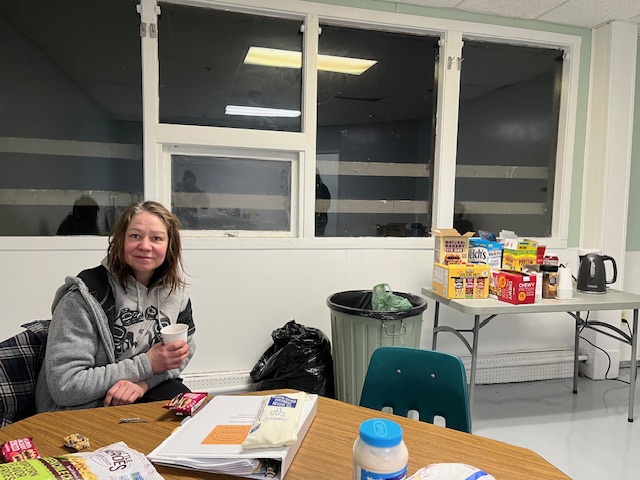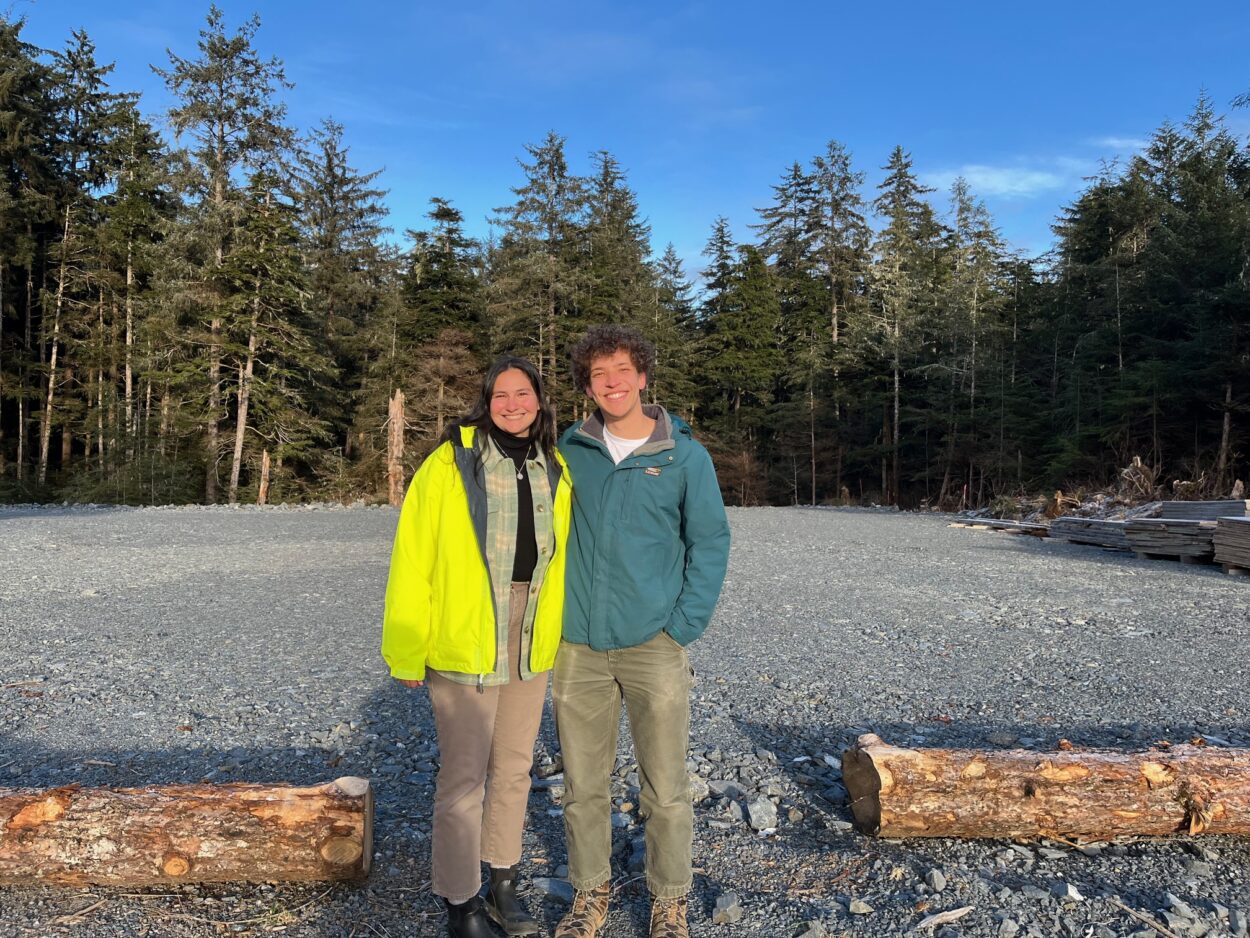
CORRECTION: An earlier version of the story said that the SAFV shelter primarily serves women and children who have survived domestic violence. As of July 1, 2023, the shelter is now serving all survivors of domestic violence, regardless of gender.
CORRECTION: An earlier version of the story said that after the first free session, normal fees would apply. In fact, the agencies are committed to working with residents if further counseling is needed.
On a chilly Thursday night, laughter is reverberating off the walls in the basement of Sitka’s United Methodist Church. One man is eating Stove Top Stuffing out of a paper cup. Four or five people are drinking steaming hot cocoa around a table. Outside, it’s 15 degrees Fahrenheit, but in here, everyone is warm.
We’re in the “Awake Room” of Sitka’s new warming shelter. Andrew Hinton, the Executive Director of the Sitka Homeless Coalition, is here tonight chatting with clients and keeping the hot cocoa flowing.
“This room, it remains open and with the light on overnight,” Hinton says. “There are books, some opportunities to make art or color in here, as well as a bunch of snacks and hot chocolate, which is pretty popular. As soon as we come in here we turn on the hot water maker and a lot of folks drink hot chocolate.”
It’s only the third night the shelter is open, but reviews are already coming in, and they’re good. Jacob, who wanted to go by his first name only, has been here every night since the shelter opened on Tuesday.
“I was very impressed when I first got here,” he says. “I expected to be lying just on a carpet with a pillow. They’re very gracious. I was surprised by the cots. It’s nice to sleep on a cot.”

The Sitka Homeless Coalition has been trying to establish a shelter since its inception in 2017, but finding a space that could accommodate a shelter, and that didn’t trigger pushback from neighbors, has proved challenging. Gayle Young, the Coalition’s founder, described part of the difficulty in a 2021 interview with KCAW:
“No one would allow us the use of their building,” Young said. “They wouldn’t rent to us. They wouldn’t rent to us for just two weeks trial. Every answer was no.”
The Methodist church is in a residential area, and less than a quarter of a mile from an elementary school, but Hinton says neighbors were supportive of the location, in part because the shelter is only open outside of school hours.
“Things have gone very well so far,” Hinton says. “We went and talked to the 10 or 12 closest neighbors or so, and there was a lot of support for the project and understanding for its need.”
The shelter is open on nights when the temperature is expected to dip below 28 degrees – which, this week, is five out of seven nights. In the first week, the shelter provided showers, cots, and snacks to between six and eight people each night – a little under half of the estimated homeless population in Sitka, according to the most recent point-in-time count, conducted in 2020.

Programs Director Denise Shaffer says people are here tonight for a variety of reasons.
“Like those people who have just been evicted, or people who are leaving the fishing season, and they didn’t make enough money, and so they’re having to stay on boats that maybe their captain for the season is letting them stay or you know, something like that,” Shaffer says.
That’s the case for a deckhand named Joshua, who says low fish prices made it hard for him to pay rent – or buy a plane ticket out of Sitka – this fall. He says if he weren’t here, he’d be in a tent in the woods.
“I’d be in the woods right now,” he says. “That’s where I’d be. I’d rough ‘er out.”
Shaffer says the majority of their clients are Alaska Native or white men between the ages of 30 and 60 – a population not served by Sitka’s SAFV shelter, which focuses primarily on survivors of domestic violence. The warming shelter is low-barrier, and while alcohol and drugs aren’t allowed inside, Shaffer says they won’t turn away someone who is visibly intoxicated.
“We seek to provide immediate need first,” she says. “And so once you have shelter, once you have, like, food in your belly, then you don’t have to start thinking about these survival mode things. And you can start thinking about, ‘okay, how am I going to stop drinking?’ Or ‘how am I going to get the help that I need?'”
The Coalition is juggling other programs to address immediate need – a “Showers and Laundry” program through the Sitka Laundry Center, and a hot dinner program through AC Lakeside grocery store that launched this fall – but their vision is ultimately to provide permanent supportive housing through projects like the Hítx’i Sáani, or Little Houses, Community under construction at the end of Jarvis Street. Right now it’s a gravel lot, but Hinton says by the end of 2024, a dozen permanent housing units will sit there.
“It’s really important to us that individuals have the stability of a home, a place to return to, a door that locks a place to put their belongings, in order to begin to improve their lives and other facets,” Hinton says.

In the meantime, the Coalition will keep prioritizing the basics – like a warm place to sleep, or a mug of hot cocoa. For clients like Jacob, that’s the right approach.
“It’s all about staying warm, and being amongst good people,” he says, gesturing to the room of people behind him. “And I appreciate it.”






























